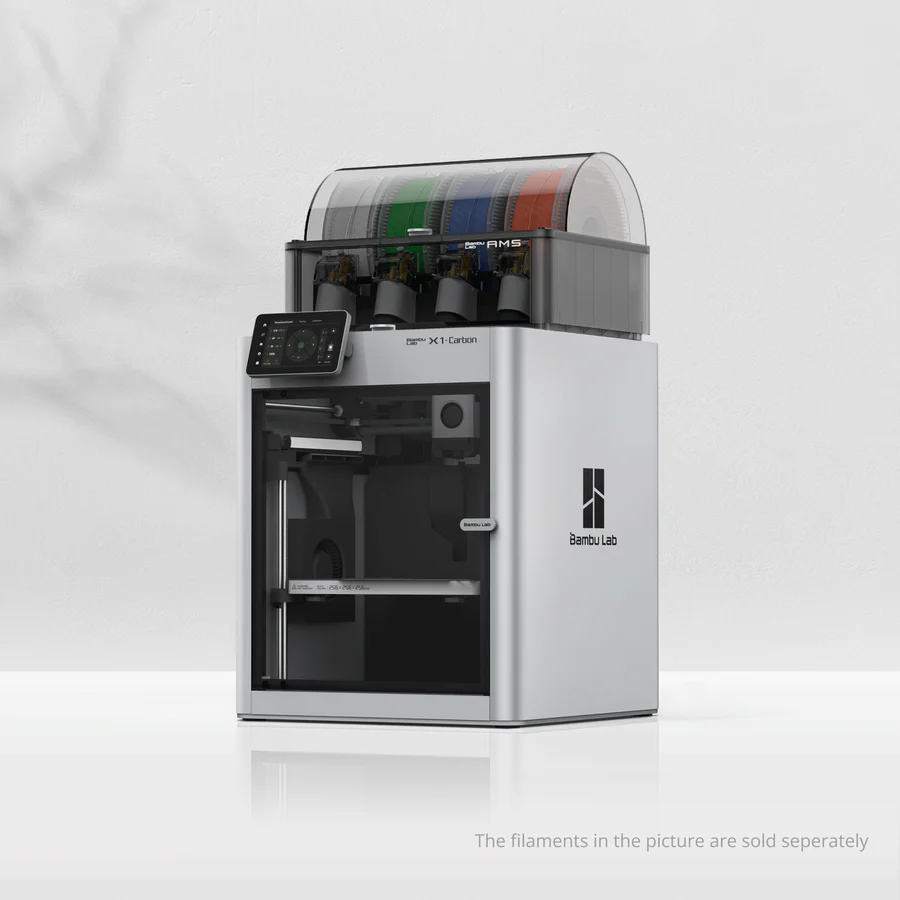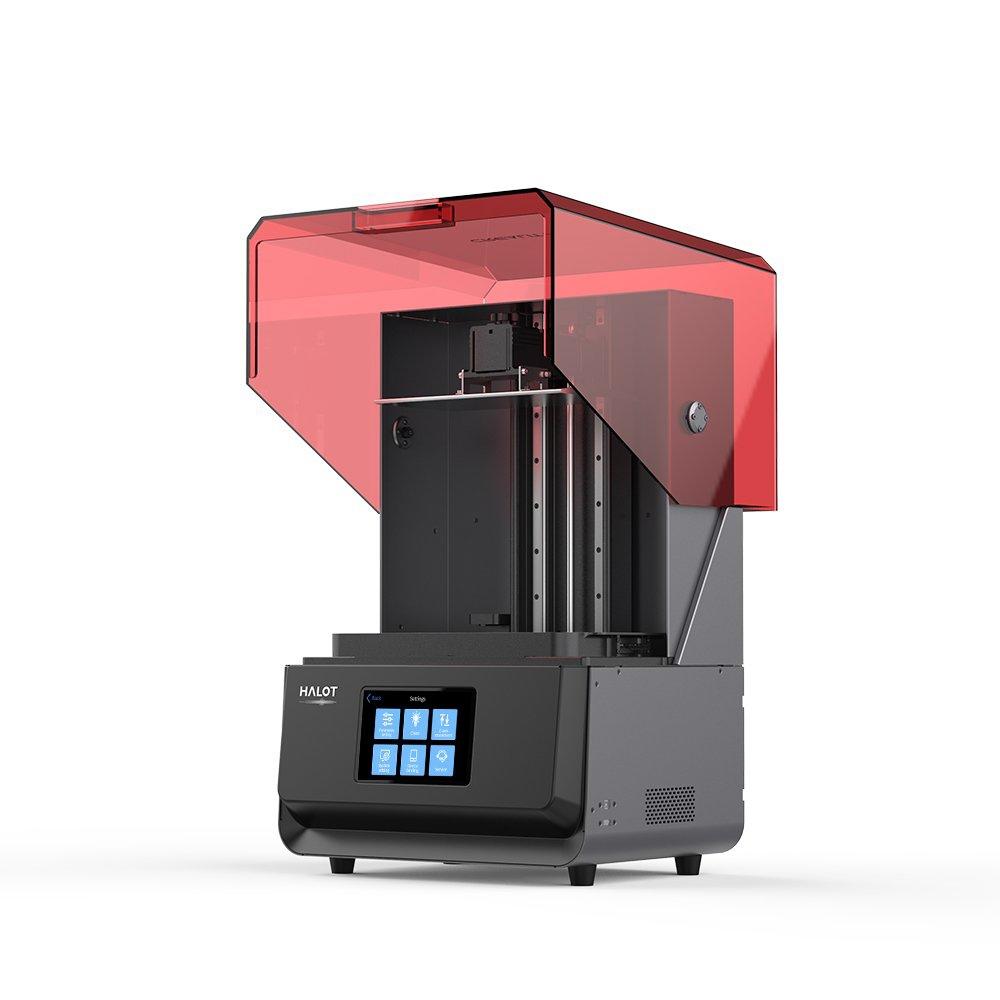Compare X1 carbon vs Halot Max
Comparison between the best 3D printers
Choose the best 3D printer at the best price. The cheapest 3D printers are here.
Buy a 3D printer here with 3D Fila.
 |
 |
|
| Model | X1 carbon |
Halot Max[BUY Halot Max] |
| Printing Material | Filament | Resin |
| Buy Filament for Bambu Lab X1 carbon | Buy Resin forCreality 3D Halot Max | |
| Estimated price | $1449,00 | $3000,00 |
| Manufacturer | Bambu Lab | Creality 3D |
| Release Year | 2023 | 2021 |
| Print Volume [mm] | 256x256x256 | 293x165x300 |
| Printer Size [mm] | 389x389x457 | 480x387x770 |
| Weight [kg] | 14,13 | 32,5 |
| Power Loss Recovery | YES | NO |
| Maximum Resolution [mm] | 0,1 | 0,03 |
| Processor | Quad ARM A7 1.2 GHz | |
| Display | Touchscreen 5'' | Display touchscreen 5'' |
| Power Supply | 350 W | |
| Connectivity | Wifi, Bambu bus, Cartão SD | SD / USB / Wi-Fi |
| Operating systems | Windows, Linux, Macbook | Windows, Mac, Linux |
| Date of registration in the system | 2024-04-10 | 2022-11-04 |
| Release date | 2023 | 2021 |
| Extra features | The Bambu Lab X1 Carbon revolutionizes 3D printing with stunning design, high print speeds, and a streamlined user experience. It stands out with its CoreXY system, a hotend capable of reaching 300°C, allowing for a wide range of filaments. Its LiDAR-assisted bed leveling system, vibration compensation, and AMS multicolor printing capability raise the industry standard. Print quality is impressive, with the ability to fine-tune for perfection. The X1 Carbon, with its closed build volume, not only promises but also delivers one of the most advanced 3D printing experiences available to consumers. | The Halot Max printer stands out for its large print size (293 x 165 x 300 mm) and uses SLA technology. It has an integral light source for improved accuracy and a strong core with an advanced operating system. Its Z-axis module ensures high precision, supported by efficient slicing software. The machine offers online OTA updates and boasts an adjustable layer thickness between 10 and 200 microns. Its XY-axis resolution is 3840*2160, with 0.05 mm accuracy, and an integral 405nm light source. The printer includes a 5" touchscreen and multiple connectivity options, such as USB, Creality Cloud, and HALOT BOX WiFi. With cutting-edge technology, the Halot Max is ideal for printing small models with uniform precision, thanks to its self-developed lighting system and stable printing mechanism, which includes dual linear guides, ball screws, and an intelligent brake system. |
| Support for multiple colors and materials (AMS and CFS) | YES | NO |
Notes * |
||
| Cost-benefit | 7 / 10 | 5 / 10 |
| Hardware | 6.4 / 10 | 1.2 / 10 |
| Tela | . | . |
| Print volume | 4 / 10 | 3 / 10 |
| Performance | 4 / 10 | 9 / 10 |
| [BUY Halot Max] |
Conclusion |
| In comparing the Bambu Lab X1 Carbon and the Creality 3D Halot Max 3D printers, several distinguishing factors emerge that will influence the decision for potential users. The Bambu Lab X1 Carbon presents a strong value proposition with its advanced features, such as a CoreXY system that enables high print speeds and the flexibility to use various filament types due to its hotend capable of reaching temperatures up to 300°C. Its innovative LiDAR-assisted bed leveling and enhanced user experience through connectivity options like Wi-Fi and Bambu bus augment its appeal for users seeking efficiency and precision. Moreover, the X1 Carbon's power loss recovery feature ensures that print jobs can continue seamlessly after interruptions, a significant advantage for long or complex prints. With a cost-benefit score of 7/10, it offers reasonable value for the features provided. On the other hand, the Creality 3D Halot Max, while slightly more expensive and heavier, excels in print volume and precision thanks to its SLA technology. It is designed for high accuracy with a maximum resolution of 0.03mm, making it particularly suited for detailed small models. However, it lacks certain advanced features such as power loss recovery and support for multiple colors and materials, which may limit its versatility compared to the X1 Carbon. Its cost-benefit score of 5/10 suggests that while it has impressive specifications, the overall balance of features to price may not be as favorable. Ultimately, the choice between these two printers depends on the user's specific needs. Those prioritizing versatility, advanced features, and user-friendly experience may gravitate towards the Bambu Lab X1 Carbon. Conversely, users focused on high precision for intricate models may find the Halot Max to be the better fit, albeit at a higher price point. In summary, the X1 Carbon represents a more all-rounded option, while the Halot Max caters to niche printing demands with its SLA capabilities. |

